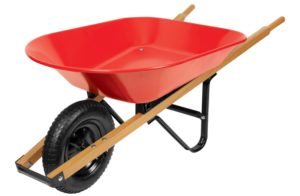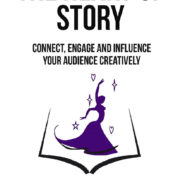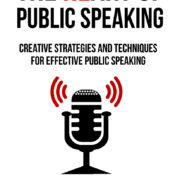Forgiveness and Leadership
I hear it is a good thing. I understand the world expects it of me. I also trust it heals and sets me free. Yet, I have been holding off talking about this for a decade now. I was under the impression that forgiveness was the stuff that preachers and pastors talk of. Yet, every time I helped nudge a leader back into form, back into productivity, the work that, mostly, needed to be done was for them to let go of something that was weighing them down so that they could go on to something that would heave them up. They needed to let go. They needed to forgive.
Then I must also confess that every time I, personally, wanted to reach upwards I had to let go of something that was holding me down and grounding me downwards. That something was usually a disappointment, a trauma, a grudge, a failure or even just an unqualified, irrational, hallucinated fear. And, all of these causes and ‘uncauses’ had to be managed and let go of before any and every leader could climb upwards. And, by the way, everyone has leadership potential in them and thus everyone is a leader or a leader in the making. Yes, you too.
I bear grudge to a former boss who thought that I was way too green behind my ears and treated me likewise. I bear a grudge against a business partner who sabotaged contracts because of our differences in ethnicity and backgrounds. I resent customers who take their business to others because they are blood-related and not because they serve and deliver better.
From an authentic leadership perspective, all these reasons are shallow. They are ‘uncauses’ to be holding grudges, resentment and even anger towards others. An executive within an organization and a leader in social and business circles grows, blooms and inspires others when she can overcome malice, move on to a better place and better productivity for all.
How?
Not just conceptually but in practice, in reality. Literally.
How?
First, on a piece of paper briefly describe a grudge you hold against another. Practice precision and brevity in the description. Yes, okay to be emphatically expressive but be succinct about it. Let the written paper rest. Walk away from it for a while, maybe for days. There is a good chance that when you get back to it, you will have or will begin to separate fact from mental fiction. You will become objective about the incident, the behavior and the people involved.
You see there is a fine line that divides the objective truth and the conjured up, victim perspective, truth in our minds. It is similar to the fact that rational thinking nodes and the romanticizing nodes in our brains are not very far apart. Giving our thoughts and emotions a little space and time allows them to segregate.
Second, when you recognize the difference between self-generated illusions of hurt and deliberate damage done by another then make a cognitive effort to place yourself into the shoes of that another. Think of answers to questions like:

Forgiveness and Leadership
- What background do they hail from?
- What kind of experiences and exposures have they lived through?
- What are they trying to shield, protect or prevent from happening?
- What might be their real agenda behind their behaviors and their machinations?
- What might they be afraid of?
- From their point of view, what might you represent for them?
- What might you, consciously or unconsciously, have done to annoy, hurt or scare them?
Third, visualize what your issue might look, sound and feel like to an absolutely open-minded and neutral witness to your relationship. The way to go about it is to think of critical incident or an issue occurring between two of your friends and what might the opinion of a teacher, a coach or an elder be about that incident.
- What would a teacher, coach or an elder have to say about the grudge you hold against another.
- What would she say or do?
- How can you emulate the words and actions of a person you consider kind, compassionate, and a clear thinker?
As you will yourself and as you stretch your mental and emotional muscles to go through these three steps the person and his actions that caused you ire become less and less important to you. The clarity and heightened resolution of that anger begin to fade away. Eventually, the target of your ire begins to fade and begins to reform, rebirth in your mind as another individual, another ordinary, simple human being just like you. You might also want to share your thoughts with a friend. You might try rehearse a conversation and a dialogue with the one you want to forgive. You need not take this up in reality. You are only taking this up to cleanse your neurological system of toxicity. Just the process lived out vicariously helps a lot.
It is a slow, steady process. It requires persistence, faith in your abilities to succeed, and a certain mental discipline. It cannot be achieved in a day. It can be achieved the same way you acquire and build a new habit, or a new muscle. The more such forgiveness muscles you build the stronger a human being and a leader you become. Just like a good fitness regime that needs to be supported by a good diet the ability to forgive requires that you choose your thoughts, words and actions again and again. When you find yourself sinking into anger, resentful and depressive thoughts about a person or incident go for a walk, a run or a trek. Mind the choice of your words and conversations with others. The more recklessly you talk ill of others or of negative incidents the more they flourish and solidify in your own mind. We are all auto-telic. We have malleable brains and we shape them by will, thought and behavior. We become what we constantly think about. Think about being angry and upset over a past grudge and you become a depressed and angry person all across.
- Leadership is about being aware, being agile, and grasping moments that will innovate, change things.
- Leadership is about journeying over a distance, over to a better place-a vision of a brighter future.
- Leadership is about including others, millions of others, and enrolling them to move forward by moving yourself.
All this can be achieved with grace and with gumption. Grace to accept and gumption to let go. A leader, all leaders need to stay light and unburdened and they need to move on ahead with deliberation and purpose.
At the end of it all. At the end of all your striving and struggling if you are unable to let go of nasty, toxic memories; if you are unable to forgive others then forgive yourself for not being able to forgive others.
Alternatively, better still, start the whole forgiving process by forgiving yourself first. Yes!










